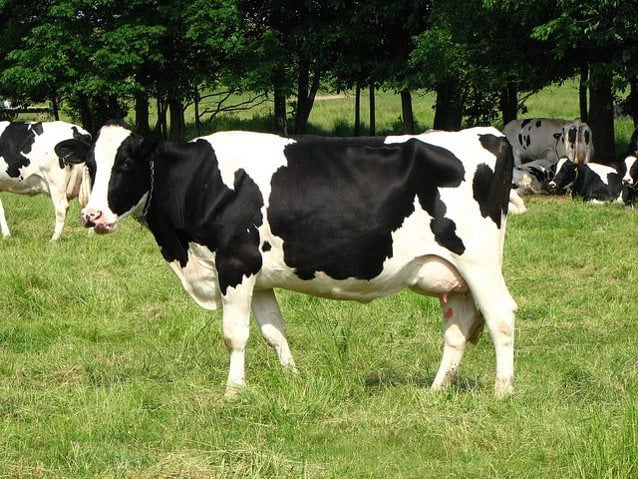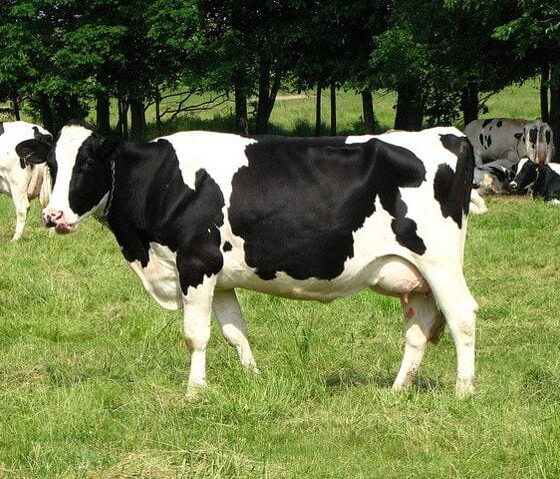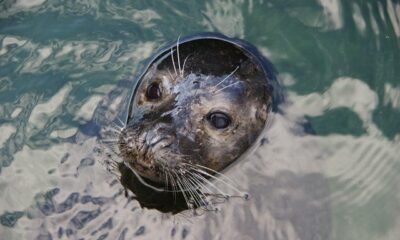

Environment
All Cows Graze in Fields? Think Again…
I spend my days at World Animal Protection campaigning for cows – to keep them grazing in fields, where they have the freedom to roam in an enriched environment, with plenty of space to interact with the other cows in their herds. Unsurprisingly grazing in a field is where many dairy farmers and the vast majority of people believe cows belong. But intensive indoor dairy farms where cows are permanently housed all year round can now be found across the UK.
Cows are very inquisitive animals with social hierarchies. Housing them within intensive indoor systems can result in heightened aggression as well as putting cows at risk of a range of health impacts.
A lack of official statistics means we’re short on the facts when it comes to knowing exactly how many intensive dairy farms there are, how much intensive milk is being produced and how many cows face a life that means they will never or rarely graze on grass in a field.
And a lack of clear labelling means as consumers we’re short on the facts when it comes to knowing if the milk we’re drinking has come from cows that are free to graze outside, where they can express their natural behaviours or from intensive indoor dairy farms. And lots of people, like me, really want to know exactly that: Where does my milk come from and how is it produced?
In our new Full Fact Milk film, I spoke to farmers about why grazing on grass is better for cows and why they feel passionate about giving these gentle creatures the freedom to express their natural behaviours. Andrew Ayrton, a pasture-based dairy farmer, told me “To go outdoors is just a basic freedom that every cow should have. I couldn’t live with myself, looking at a cows cooped up in a building all summer long. It’s just not where they belong.”
It was wonderful to meet and film the cows in Yorkshire and Shropshire and see how they had the space to graze and exhibit their natural behaviours.
The beautiful cows I met were calm, contented and had the freedom to roam and I’m sure this is what most consumers have in mind when they think about where their milk comes from – lush green fields with free grazing cows.
Sadly, that is not always the truth.
I also spoke to shoppers for their views about keeping cows in intensive-indoor dairy units or on pasture based dairy farms. You can see in our film how the people I met reacted to seeing the difference between the two kinds of farms and how they wished to see a free range dairy labelling system for milk in a similar way to the labelling that exists for eggs.
We urgently need the facts about how our milk is produced, and that’s why we are calling for milk to be labelled so that you can choose to buy milk from cows guaranteed to have grazed in fields for most of the year.
Please check out our short film and find out more about how you can help keep cows free to graze on grass by signing our pledge.
Over 40,000 animal lovers have signed already so, if you want to help keep cows in fields, please take the Full Fact Milk Pledge today


 Environment10 months ago
Environment10 months agoAre Polymer Banknotes: an Eco-Friendly Trend or a Groundswell?

 Environment11 months ago
Environment11 months agoEco-Friendly Home Improvements: Top 7 Upgrades for 2025

 Features9 months ago
Features9 months agoEco-Friendly Cryptocurrencies: Sustainable Investment Choices

 Features10 months ago
Features10 months agoEco-Friendly Crypto Traders Must Find the Right Exchange





























